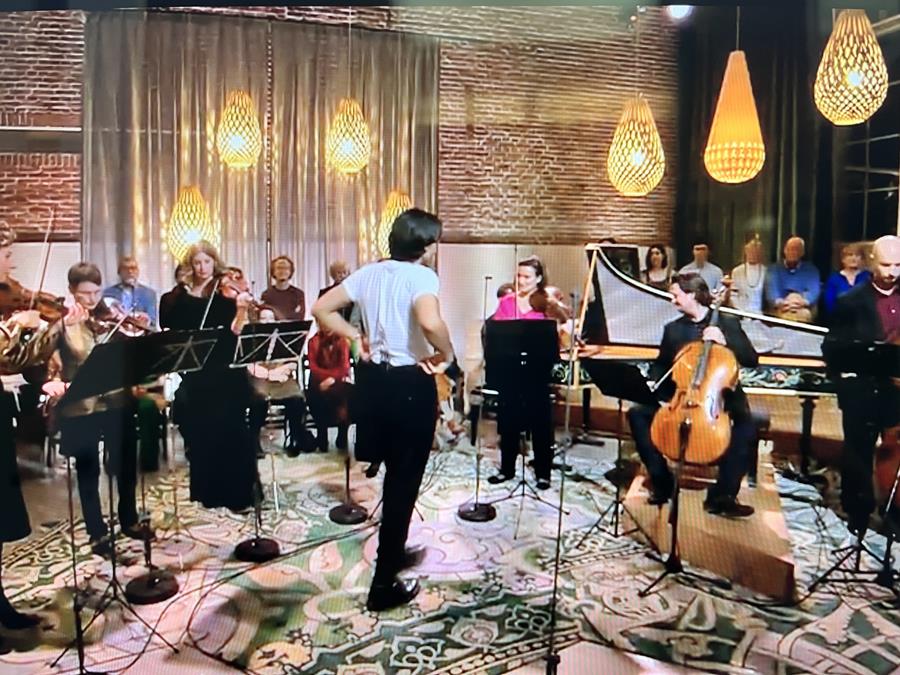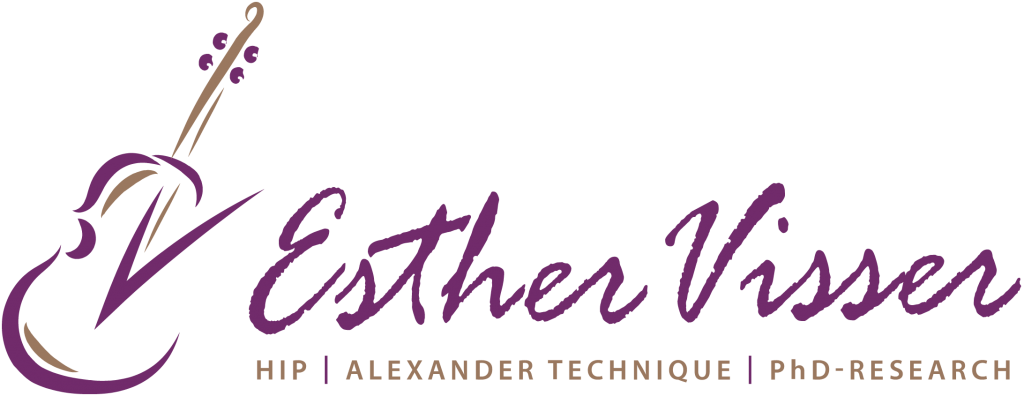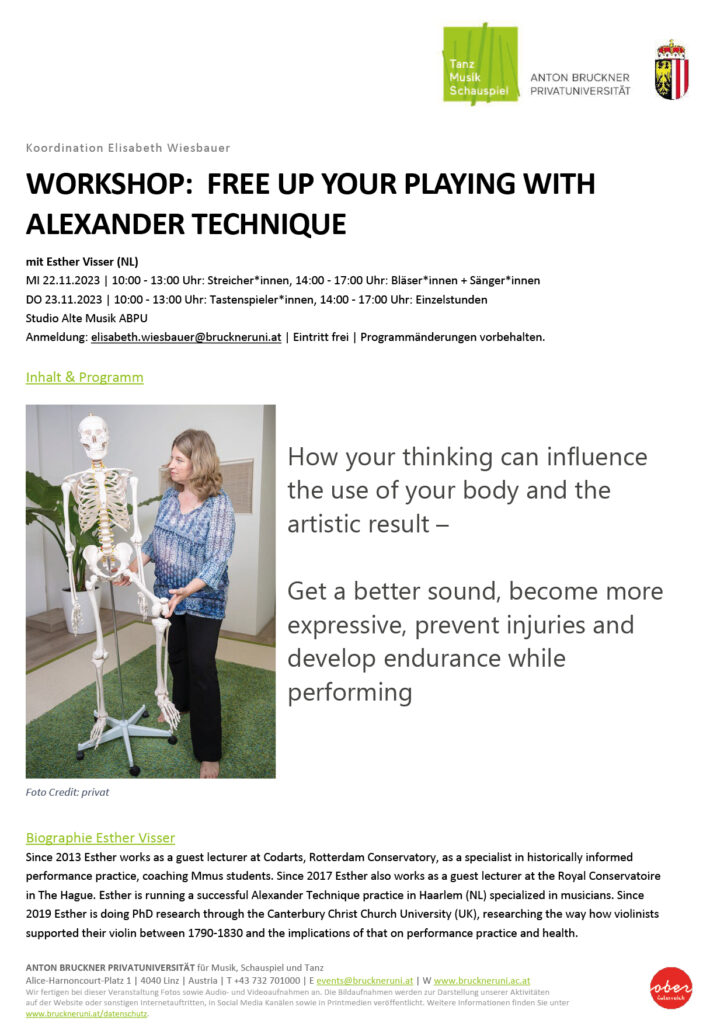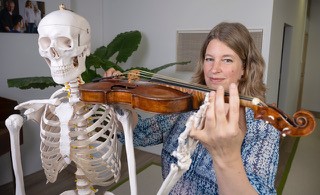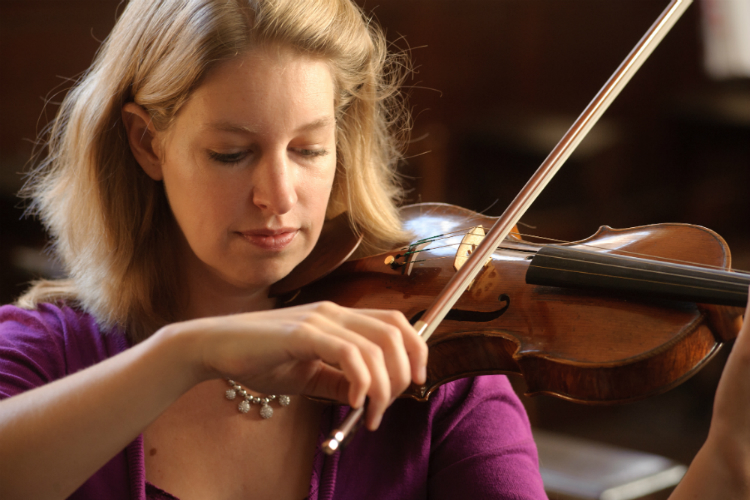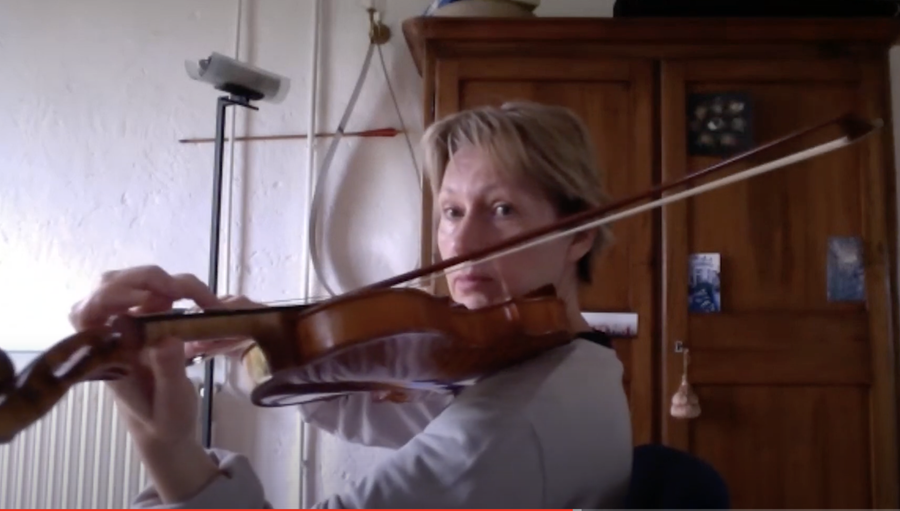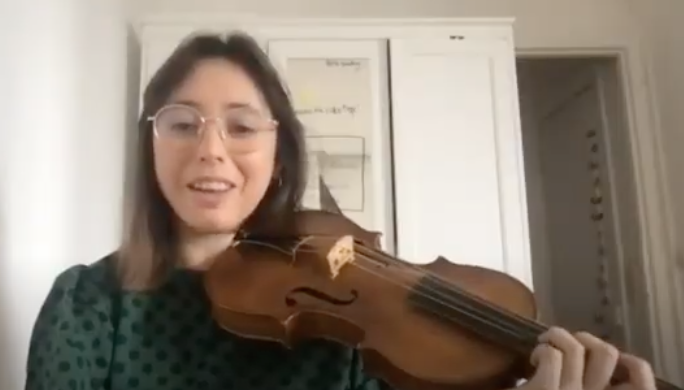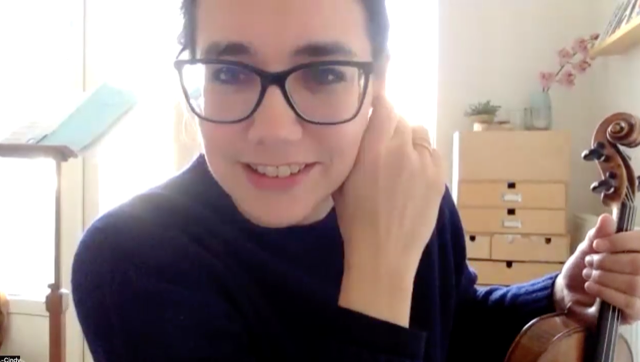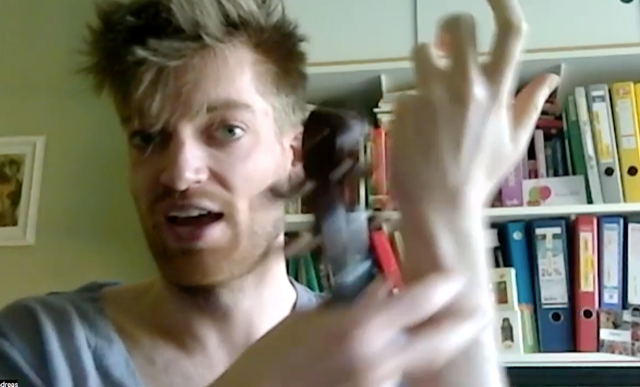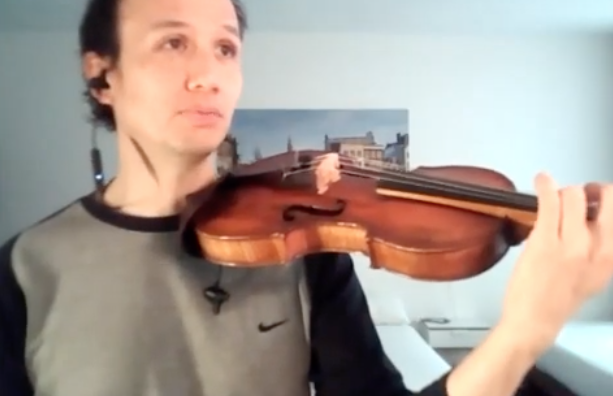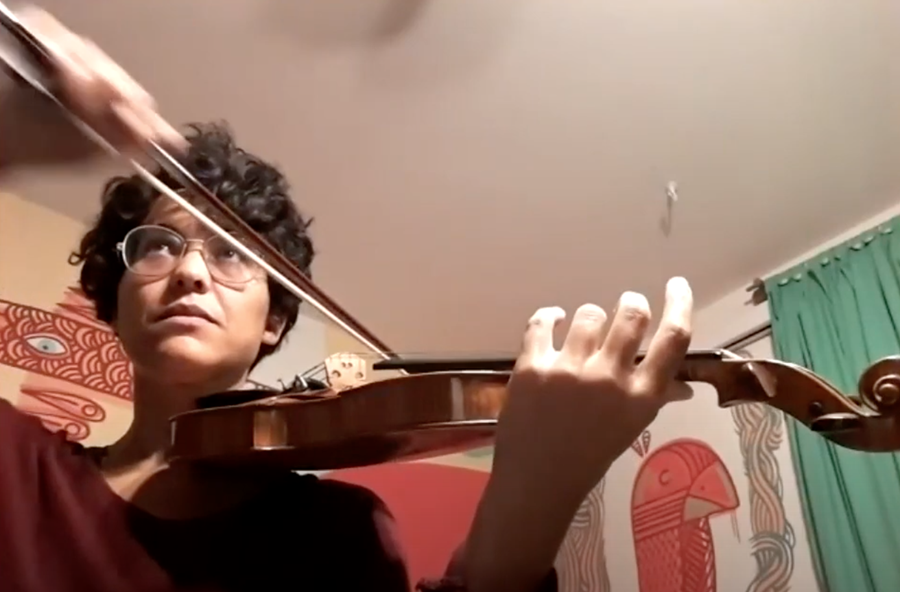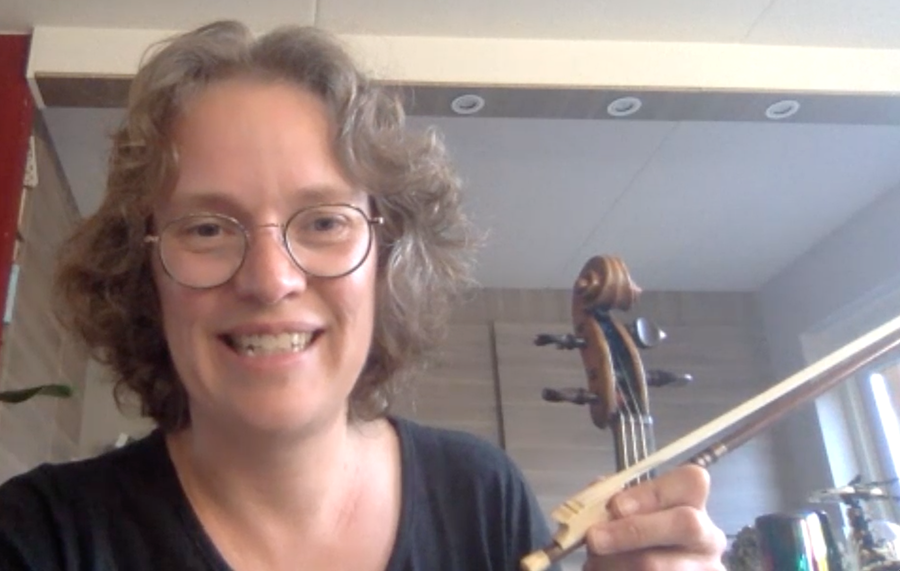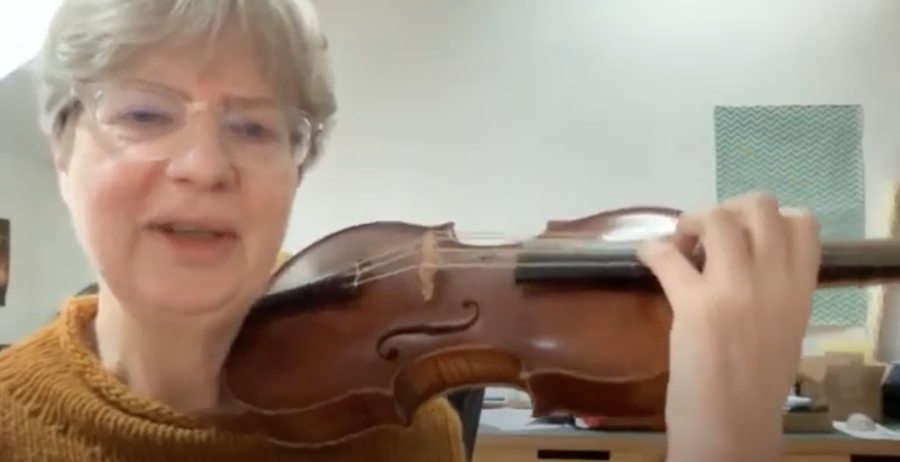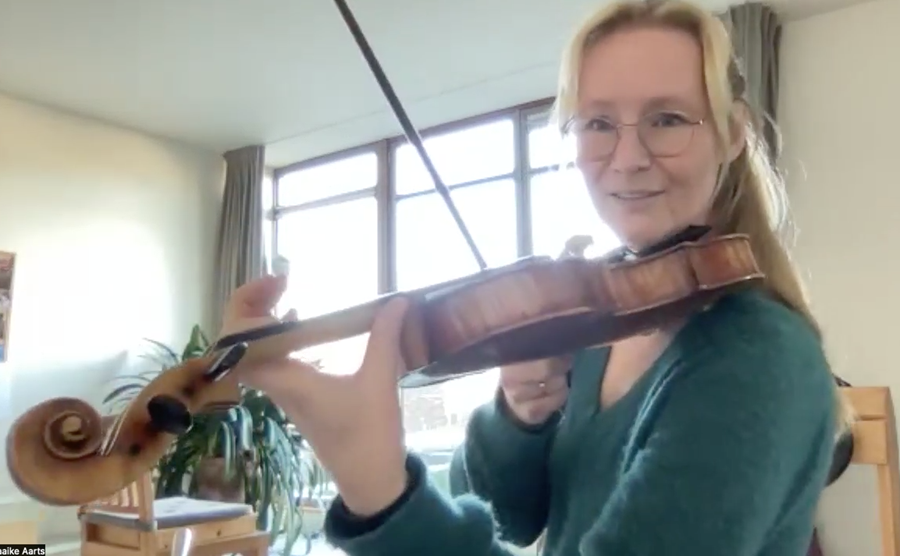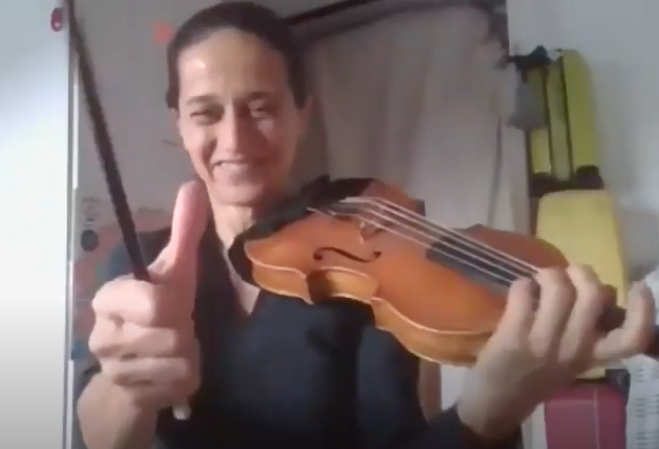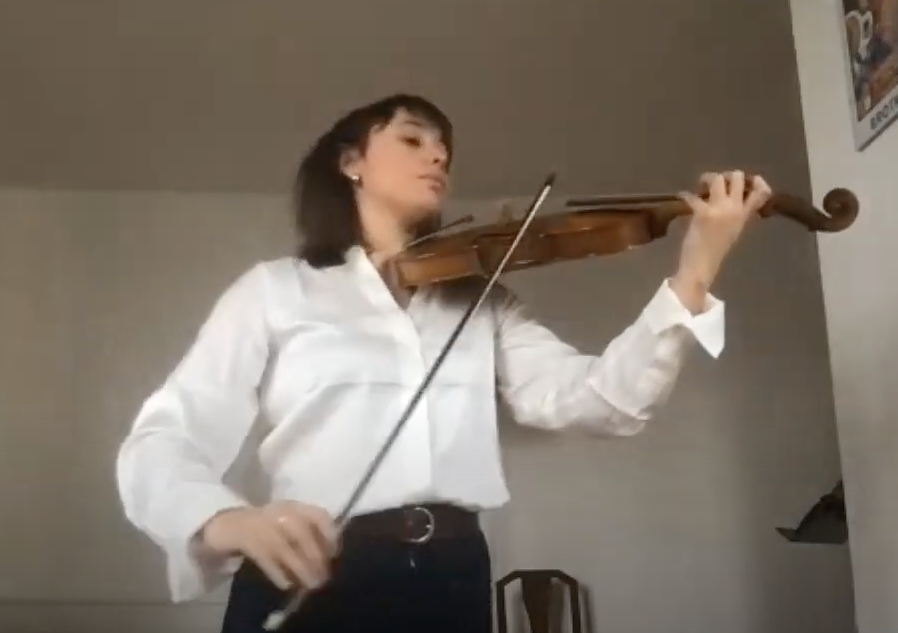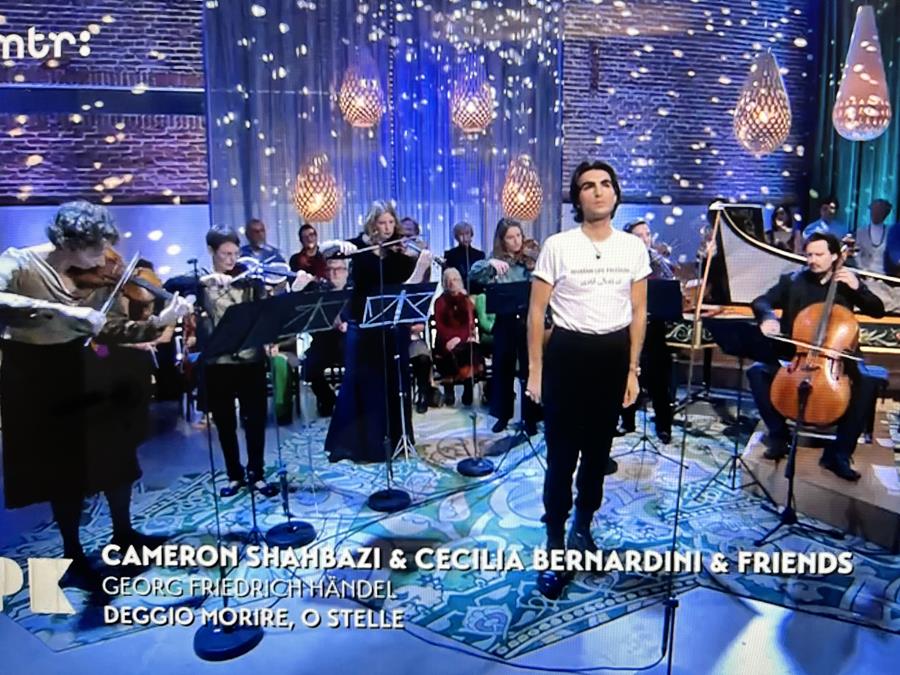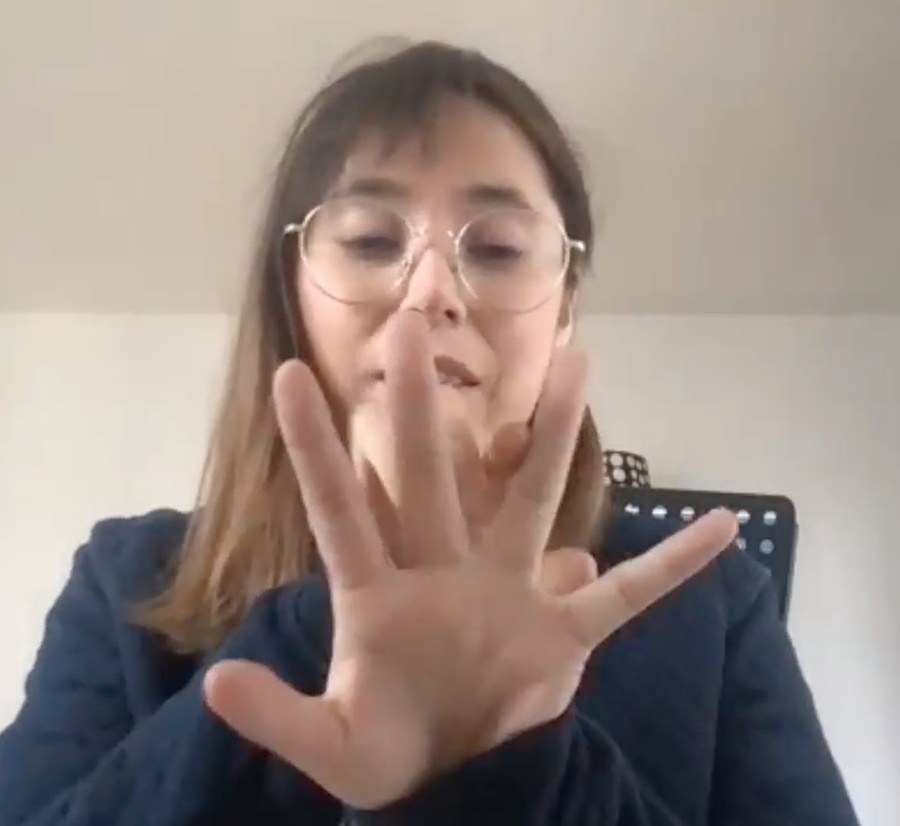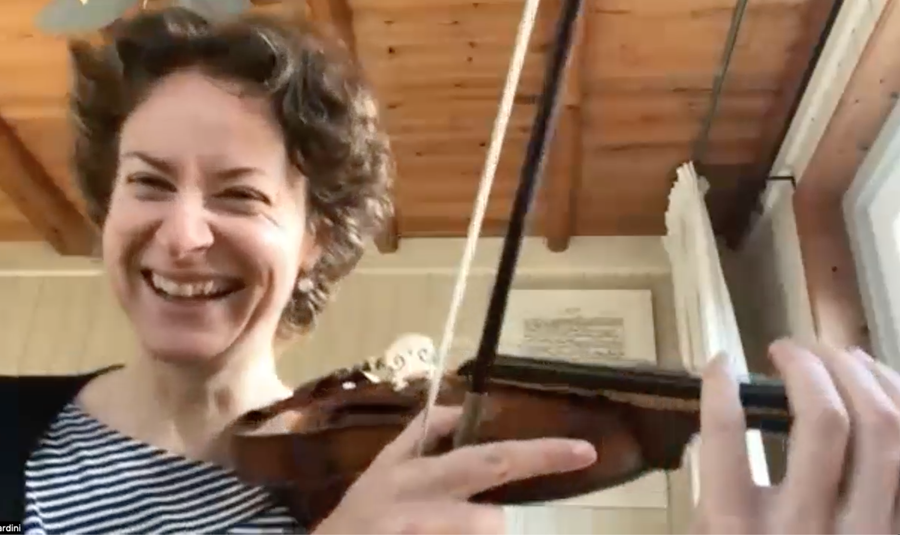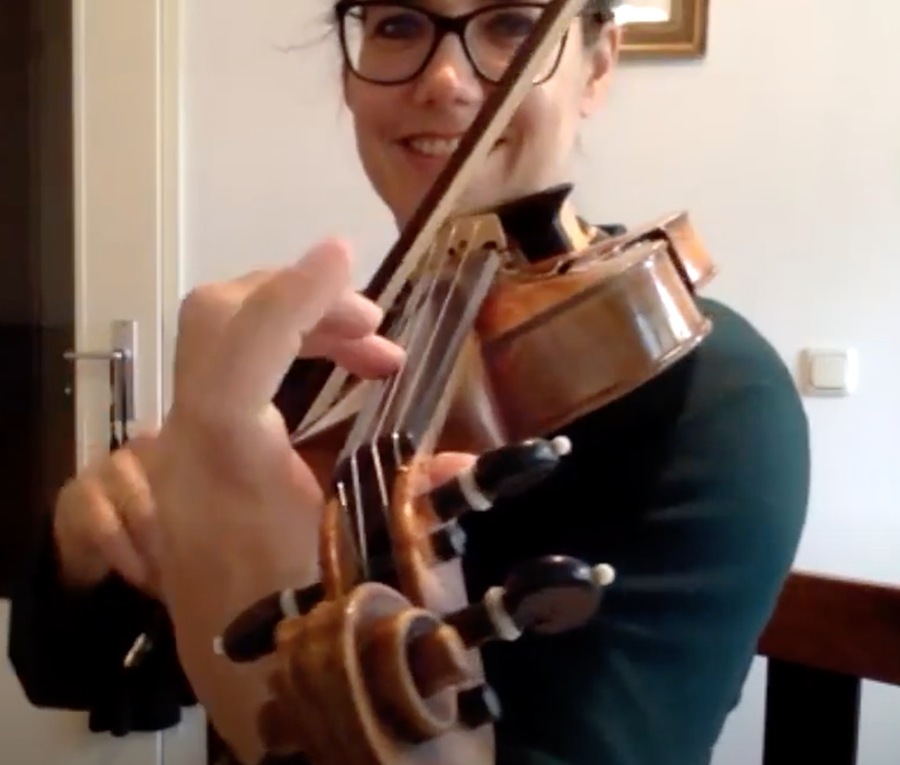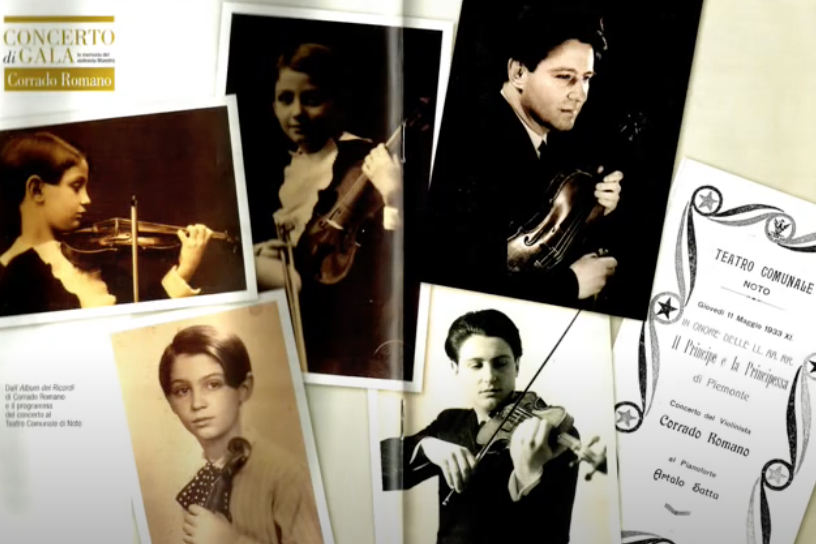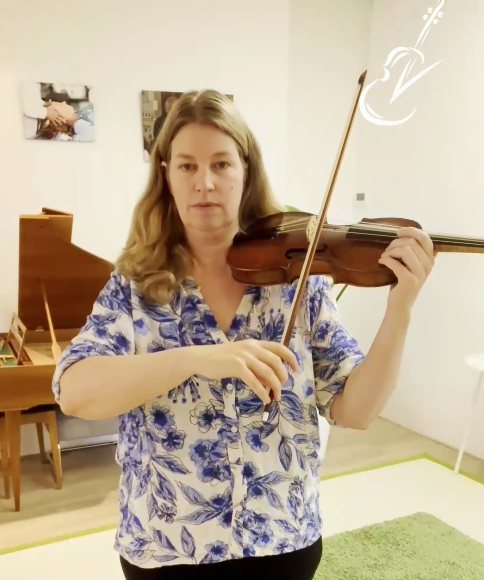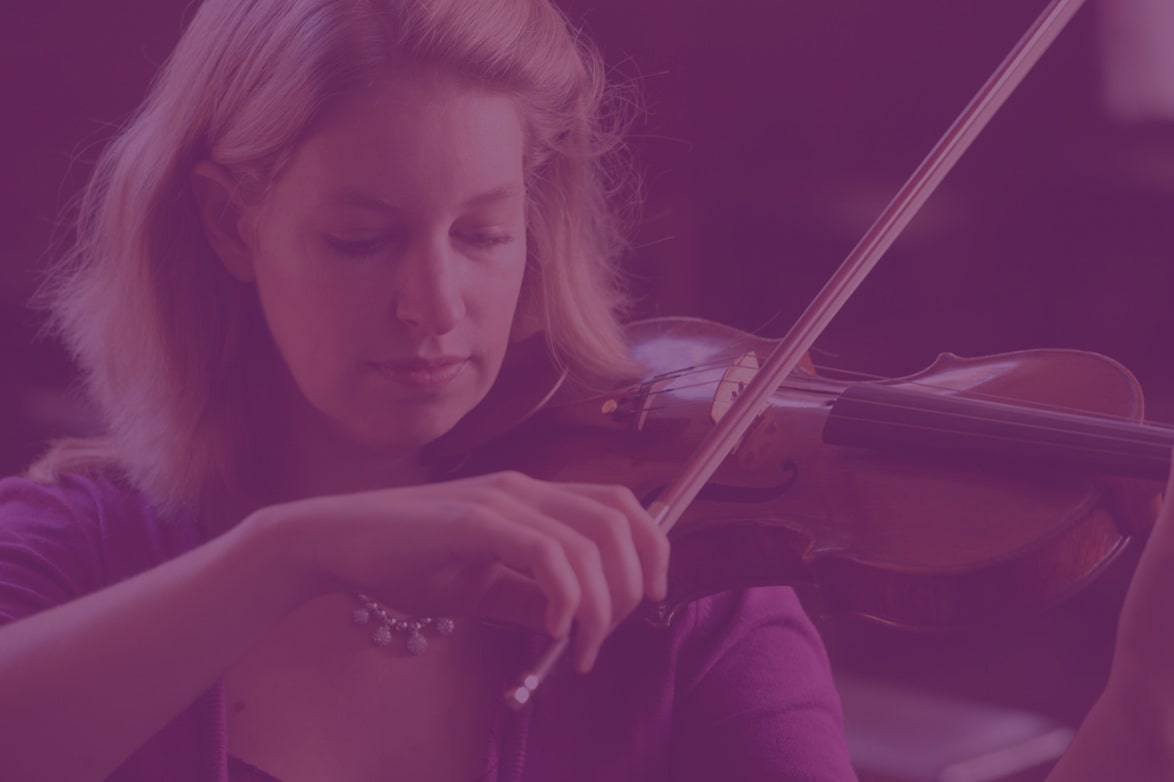
The 14th week of my experiment
Hi everyone,
This is the 14th week of the experiment on playing without a shoulder rest and / or chin rest. Here are some updates and some feedback.
Thank you for sending me your videos, it’s really important for my research. Some people just finished the whole 12 week program, sent their last video and filled out the exit survey. Fantastic, thank you so much! The majority however is still about half way in the program and that is perfectly fine, please do take all time you need and don’t hurry.
Again, some more new participants joined as well, welcome to Jane and Marlene! Many people already filled out the entrance survey. Thanks. If you didn’t do it yet, please do so before you start the lessons.
If you know more people who like to join, for example starting this or next month, this is still possible through my website. If you missed the newsletter last week, you can still read it here. There is a collection of past newsletters at my website available too.
Please be welcome to join the Zoom session next Wednesday 11.00 AM (Dutch time) if you want… Just to meet or to ask some questions. Would be nice to meet up. You can watch Zoom sessions back on the login page where the video lessons are, as well.
“I think your research is very important and I think you are very right on all the points you raised. I am so thankful that your talk about this, because almost every musician has unhelpful habits.”
– Jun Keller, Vienna Philharmonic Orchestra,
participant in the experiment
14th Zoom session
Last Wednesday we had a 14th zoom session with some participants of this experiment. It was lovely. If you want to watch it: I recorded the session and there is a link to it in the login page under the video lessons.
Rebecca from Paris , Nadi from Paris and Daniela from Italy were taking part. Rebecca Gormezano joined us for the first time, as she usually has to work on Wednesdays but now had holidays, so it was very nice to meet her. She studied modern violin (Russian school) in Paris and Cologne, then she changed to gut strings, because she loves the sound. While she was pregnant in Cologne she kept playing on gut strings but still with the use of a shoulder rest, like many people in Germany do. Then she returned to France and had her first child and did a masterclass with Mira Glodianu who is teaching baroque violin at Brussels Conservatory (French department), and after that traveled regularly to Brussels to have lessons with her. There she played without a shoulder rest, but using a small round pad under her violin. Mira told her that using a small pad was fine, but the left hand had to be ‘free’ (meaning having space between the first finger and the neck of the violin). However, she never spoke with Rebecca about support of the thumb or explained how the hand could be ‘free’. So Rebecca felt alone with her question how to do it and since then she still is alone with this question, so our experiment came at a right moment for her. She read all our news letters and she is now in lesson 3.
Last Wednesday we had a 14th zoom session with some participants of this experiment. It was lovely. If you want to watch it: I recorded the session and there is a link to it in the login page under the video lessons.
Rebecca from Paris , Nadi from Paris and Daniela from Italy were taking part. Rebecca Gormezano joined us for the first time, as she usually has to work on Wednesdays but now had holidays, so it was very nice to meet her. She studied modern violin (Russian school) in Paris and Cologne, then she changed to gut strings, because she loves the sound. While she was pregnant in Cologne she kept playing on gut strings but still with the use of a shoulder rest, like many people in Germany do. Then she returned to France and had her first child and did a masterclass with Mira Glodianu who is teaching baroque violin at Brussels Conservatory (French department), and after that traveled regularly to Brussels to have lessons with her. There she played without a shoulder rest, but using a small round pad under her violin. Mira told her that using a small pad was fine, but the left hand had to be ‘free’ (meaning having space between the first finger and the neck of the violin). However, she never spoke with Rebecca about support of the thumb or explained how the hand could be ‘free’. So Rebecca felt alone with her question how to do it and since then she still is alone with this question, so our experiment came at a right moment for her. She read all our news letters and she is now in lesson 3.



Rebecca told us that when she was was small, she learned that thumb and second finger had to be round and together. Her (Russian) teacher always said that between the first finger and the neck there should be place for a small sigaret paper, so not squeezing. That was nice to hear and fits with our approach here!
After that, she tried many ways to se her left hand and at the moment she does not really know anymore what to do, so she is happy with the experiment. For the last week she had been trying to support the violin with the second phalanx of the thumb. When she showed that to us in this zooms session, I said I would not recommend that, because the vibrato would be only fast and quick and there is not much flexibility in the left hand. The challenge for her is to support the violin with the last phalanx of the thumb and without collapsing in the second joint.


What I saw, is that she slightly pushed her wrist away form herself, as you see on the picture above. This creates tension in the hand and makes it more difficult to find a nice balance for the thumb. So we worked on finding a nice place for the contact of her thumb with the neck of the violin. Her thumb was a bit too vertical so the violin was slipping. We made the place where it touches the neck it more diagonal.
When she tried to do this, we saw her thumb joint collapsing as I noticed earlier in this session, so we practised together the exercise we had been developing together with Nicolette in last Zooms session, to first become more aware how the thumb works (starting at the wrist!) and then relax the muscles that are too developed and to learn to develop the muscles that are not used enough. We need to re-educate the use of the thumb.



Some spoke about the flexors and the extensors, and how to take it slowly to get them used to this new way of functioning. Rebecca already felt that the support suddenly was much easier! She said it did not feel tensed anymore. Here you see here hand already functioning in another way:

I think it will be even softer, as it will get used to this new way more. But you can see the hand and wrist already being more healthy, I would say.

We also spoke about thinking the line between the fingers towards the heart. It felt for her as if there was a lot of space between the hand and the neck of the violin, but that is just because it is new, she needs to get used to it. I recommended that she would practice this in really small time periods per day and not try it during rehearsals for example.


Then Rebecca had to go and Nadi and me continued working on the development of her vibrato, we had been working on before. Last time we discovered that she and been involving the trapezius muscle too much during making vibrato to avoid the slipping away of the violin. She told us that she does yoga every day and that she noticed in those sessions that the muscles in the left side of her body around the shoulder seem to be shorter than the other side. When she hold both arms above her head, the right arm seems longer. We discussed about it if that would be the case caused by the use of muscles (what I think) or that the bones really would be shorter (some people have this asymmetry). We agreed probably the muscle are causing it.


Now, she tries to be aware every time she plays to not involve the trapezius when playing vibrato. She told us that she only feels the trapezius involving when she plays on her romantic violin while using a chin rest and not on baroque violin (without chin rest). This made us think that maybe also the problem could be caused by how she is using her chin rest. So I asked her to put her chin rest (a very old one she found in a shop in Paris!) on her violin.

While Nadi was putting her chin rest on the violin, I checked in with Daniela and she told us that she had been practising the vibrato using the little paper between the finger and the string, as I showed last time. She had much more freedom in her wrist now, really nice!
When she toke away the paper, the vibrato on all fingers went fine, except the first one. She seemed not to remember the movement her hadn’t had made while sliding the paper over the string. It looked to me as if she was using her index finger alone, while keeping her hand still, so the movement was not coming from the wrist.


We agreed that probably the reason for that was, that the decond joint in her thumb still was collapsed while using the first finger on the string, as you see in the picture above. So I asked her to think more from the base of the thumb (near the wrist) for supporting the violin. I asked her to put two fingers (first and second) on the string and make vibrato with both. Remembering how nice she now does it with the second finger alone, and ‘transferring’ this skill to the first finger. The first finger has to learn from the second. In that way, also there will be no need to the first finger to ‘lean’ into the second, what we see happening in some violinists.

Daniela shared with us that it works for her when she uses her hand in a very soft way, so almost not pressing in the strings. Nice! That is the way to go!
Then we continued talking about how to use the chin rest, with Nadi. We discovered that both of us have a Guarneri set-up on our period instruments. I am using a Testore violin (not mine, of course, owned by a sponsor) that was build back into baroque setting, but with a rather long fingerboard so I can play Romantic repertoire on it as well. Nadi does the same.


I asked her to play something romantic, Brahms for example, and she played the beginning of the first Brahms violin/piano sonata for me. It’s my favourite as well :-)…
We noticed that she tends (lie many violinists) to ‘lay’ her head on the violin. which can give tension to her trapezius. We worked on thinking the head up.


We also talked about how to put the head on the chin rest. From Alexander Technique point of view, it is important to release that the head balances on top of the atlas and that this place is as high as between the ears. You can place your fingertips behind your earlobes and think a line between the fingers. That is how high the head rests on the atlas (the last vertebra of the neck).


When you nod ‘yes’, this is the place where the head is meant to move on the neck. Many people, however, use the fifth vertebra (much lower in the neck), for this movement. Also while reading the newspaper for example (looking downwards). Nadi also recognised that.
So first (if you want) you turn the head a bit (not too much!) to the violin and then you use that place to reach the violin with your chin (or rather your jaw). From between the ears. That takes a lot of weight of the violin and promotes better use while playing.

Same is true for looking upwards:

So for the violin:
1. You bring it up the shoulder like it is baroque repertoire and you don’t use the head (lesson 1 in this experiment)
2. Bring the head a bit to the violin, so to the left (not much!)
3. Remember where the atlas is, move from there and bring the head on the chin rest while thinking the head going up.



Nadi said that it felt much better, more in harmony, already. We also tried some vibrato in that way, which was involving the trapezius much less. With Daniela we did the same.
We also worked with Daniela on how to stand while playing, from Alexander Technique perspective. Thinking directions etc. Please check the zoom recording to see this. Especially thinking the kees going forward and away was helpful for her, to find a better way for using her pelvis and finding balance in her body.
We then worked with Nadi on the same Brahms sonata while standing, and think the head up and not ‘sinking’ in the left side of the body, which is tempting with melancholic romantic music…

Then I could not resist to have some nerdy hip discussions with her about how to stress the ‘important’ notes: more with the bowing, or with vibrato as was done in later time? Nadi prefers with the bow, which is very nice, I think. And about the use of flageolets and open strings in this sonata. And body language while playing. Anyway, a bit too much to write here… We decided Nadi will come and stay with me here in The Netherlands for some days and work together :-)…


Please take your time
It is important that everyone in this experiment enjoys the curiosity we have, and take part in a joyful and playful way. In that way, we learn the best. Don’t try too much to ‘do it right’…and don’t hurry. If you need more time, just let me know, keep me informed, and we take a bit longer. No problem!
Best regards, please let me know if you have questions,
Esther Visser
